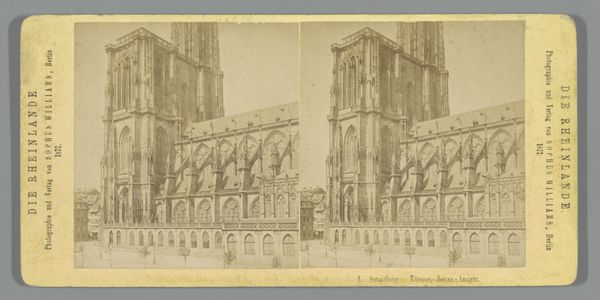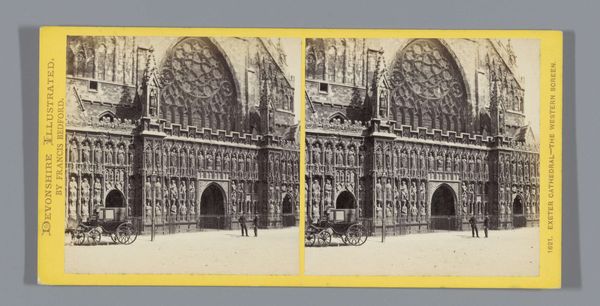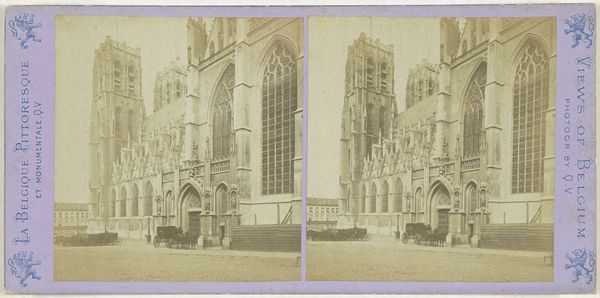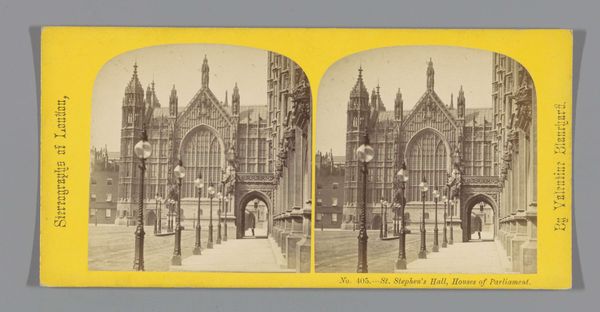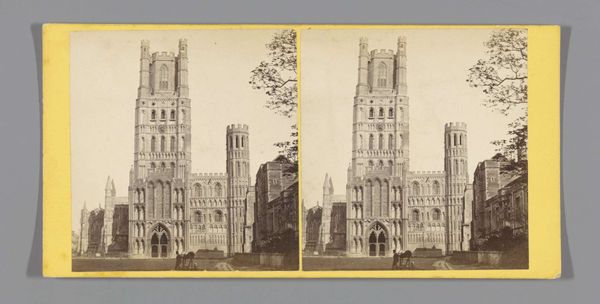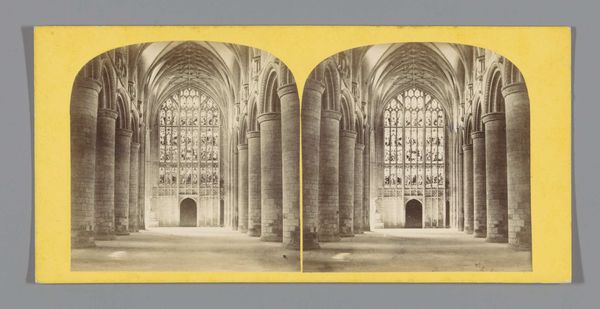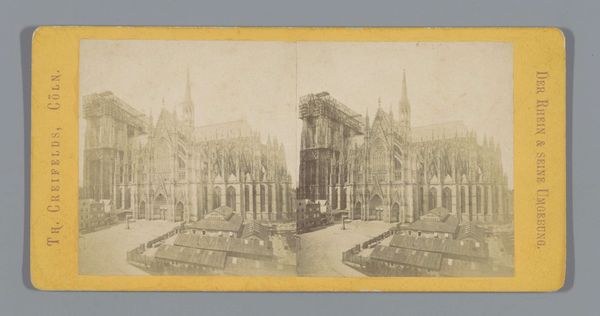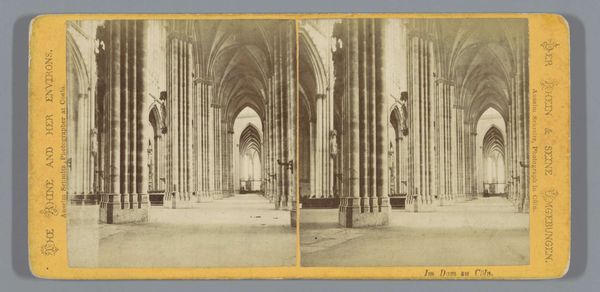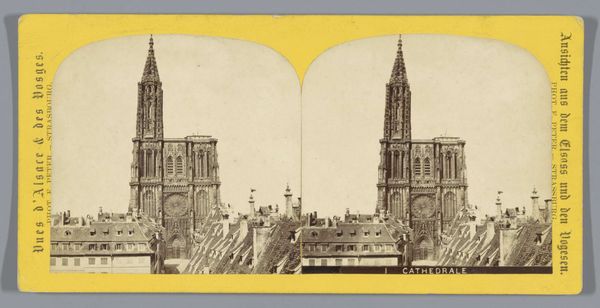
print, photography
# print
#
photography
#
coloured pencil
#
cityscape
Dimensions: height 86 mm, width 175 mm
Copyright: Rijks Museum: Open Domain
Editor: Here we have "Gezicht op de Notre-Dame van Straatsburg," a photograph from circa 1860-1880 by F. Peter. It gives the illusion of depth; the way it's presented makes me think this was designed for a stereoscope. I’m struck by how it documents this amazing feat of architecture. What makes this image significant from your perspective? Curator: The photographic capture of architectural marvels like the Strasbourg Cathedral speaks volumes about 19th-century cultural priorities and the emerging visual culture. Think about it: mass-produced images circulated widely, making iconic buildings accessible to a broader public than ever before. Who had access to it, and what impact did it have? Editor: That’s interesting. I guess I hadn't considered photography’s democratizing potential back then. So, were these photos viewed as objective records, or did they play into a specific cultural narrative? Curator: Good question. Often, these images reinforced existing power structures and nationalistic sentiments. Alsace, including Strasbourg, changed hands between France and Germany several times. Images like this, taken by someone like F. Peter, served to celebrate cultural achievements, or assert claims to it during periods of political and territorial disputes. Editor: So, photography could be both a mirror reflecting society and a tool shaping its perceptions? Curator: Precisely. The framing, the angle, even the choice to depict this specific building - all these contribute to constructing a particular understanding of the Cathedral’s significance in its era. The text framing the image also gives clues about who the photo might have been intended for. Editor: I'm now considering this building less as a standalone architectural marvel, and more of a historical flashpoint in a complicated era. Curator: Indeed, by understanding these historical and socio-political factors, we gain a deeper appreciation for not just the image, but its place in society. Editor: Thanks. It’s given me a new perspective on the photograph, its purpose, and audience.
Comments
No comments
Be the first to comment and join the conversation on the ultimate creative platform.
